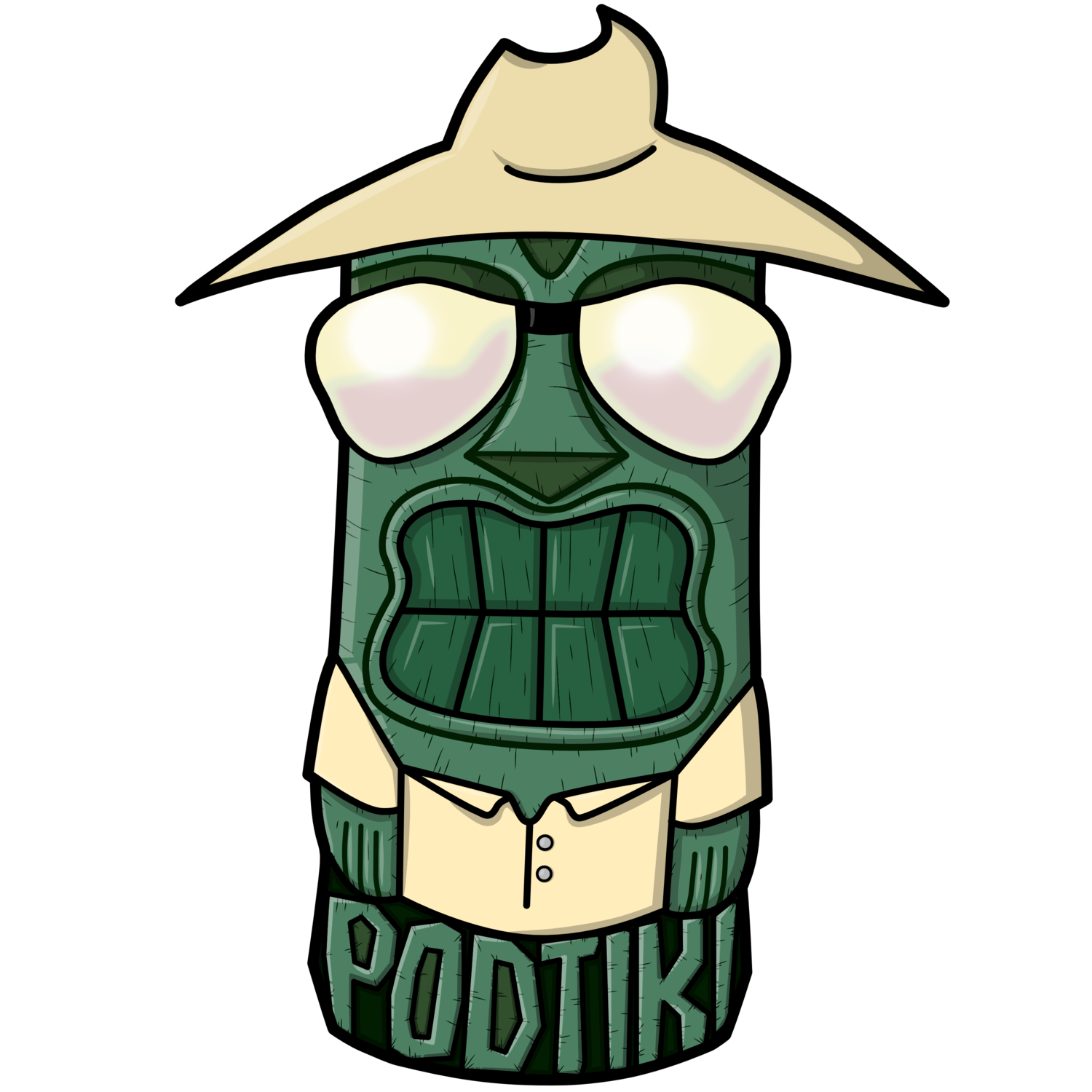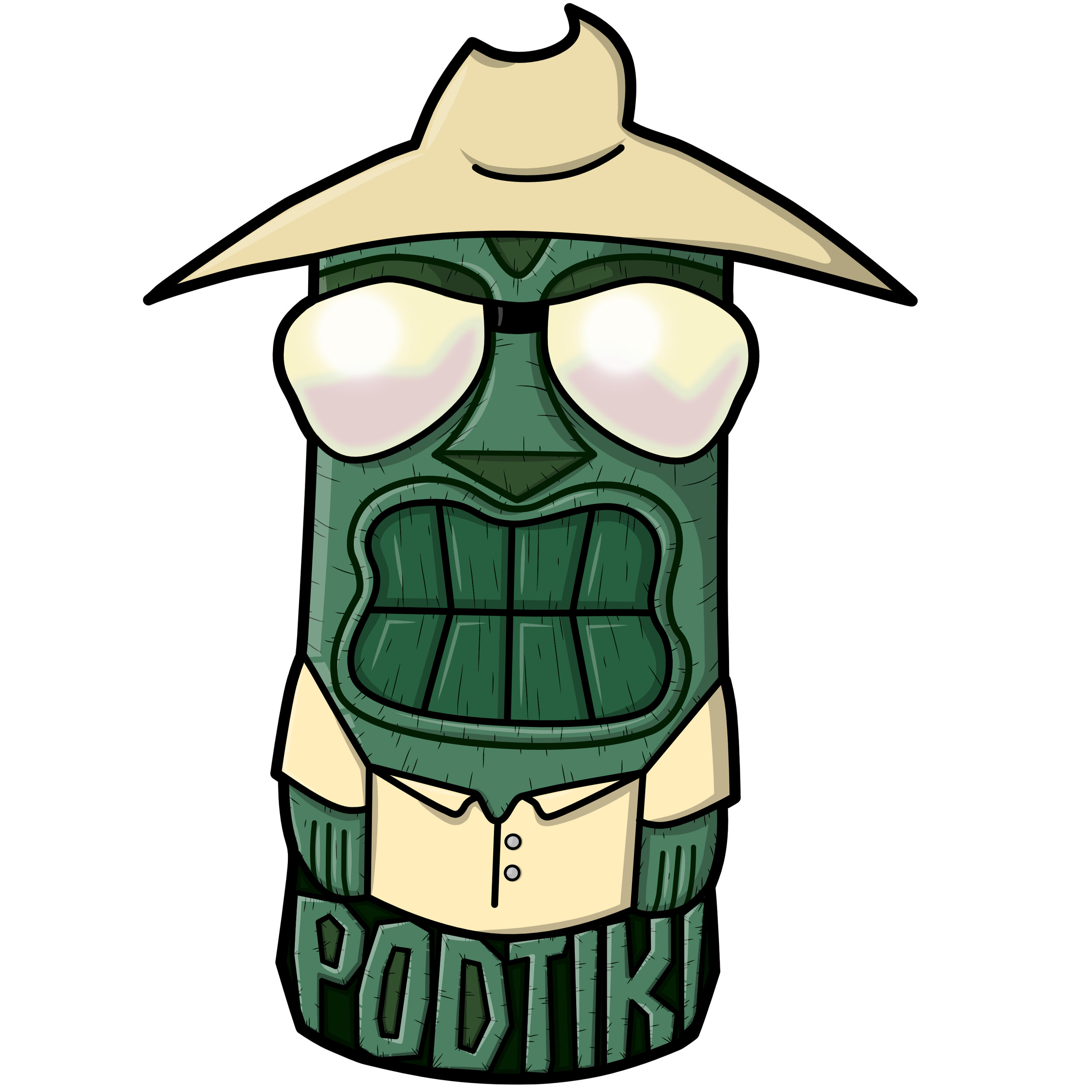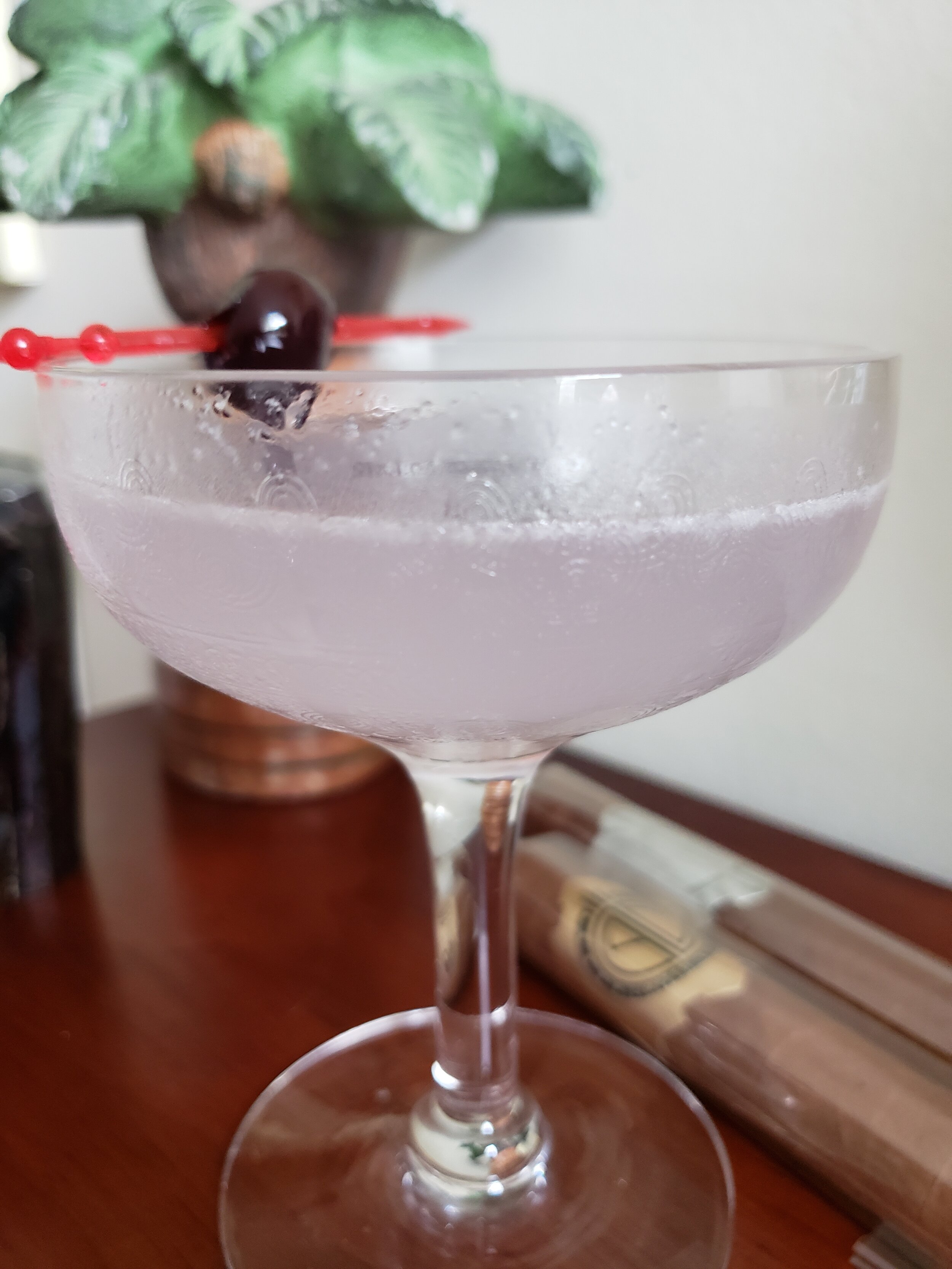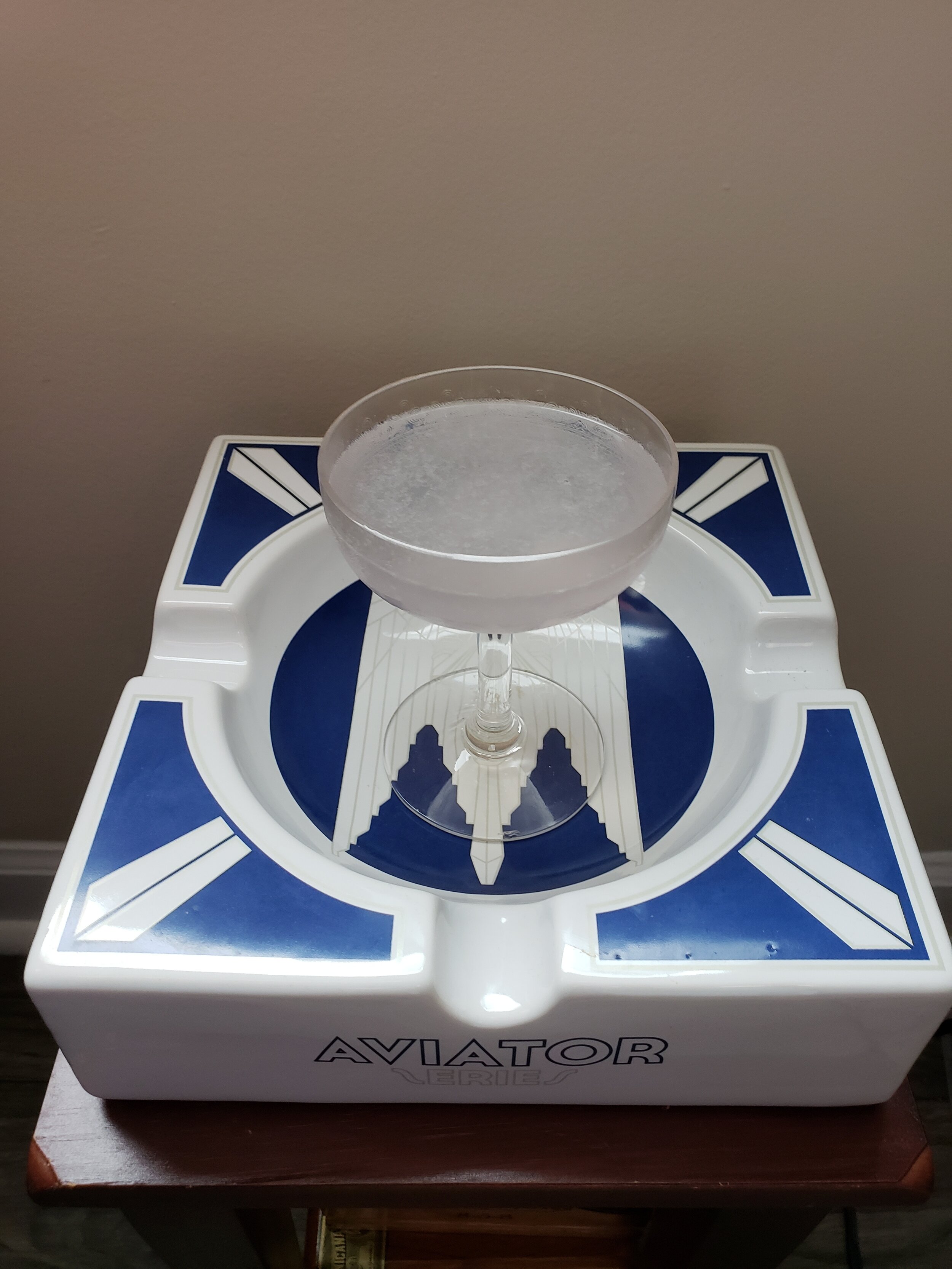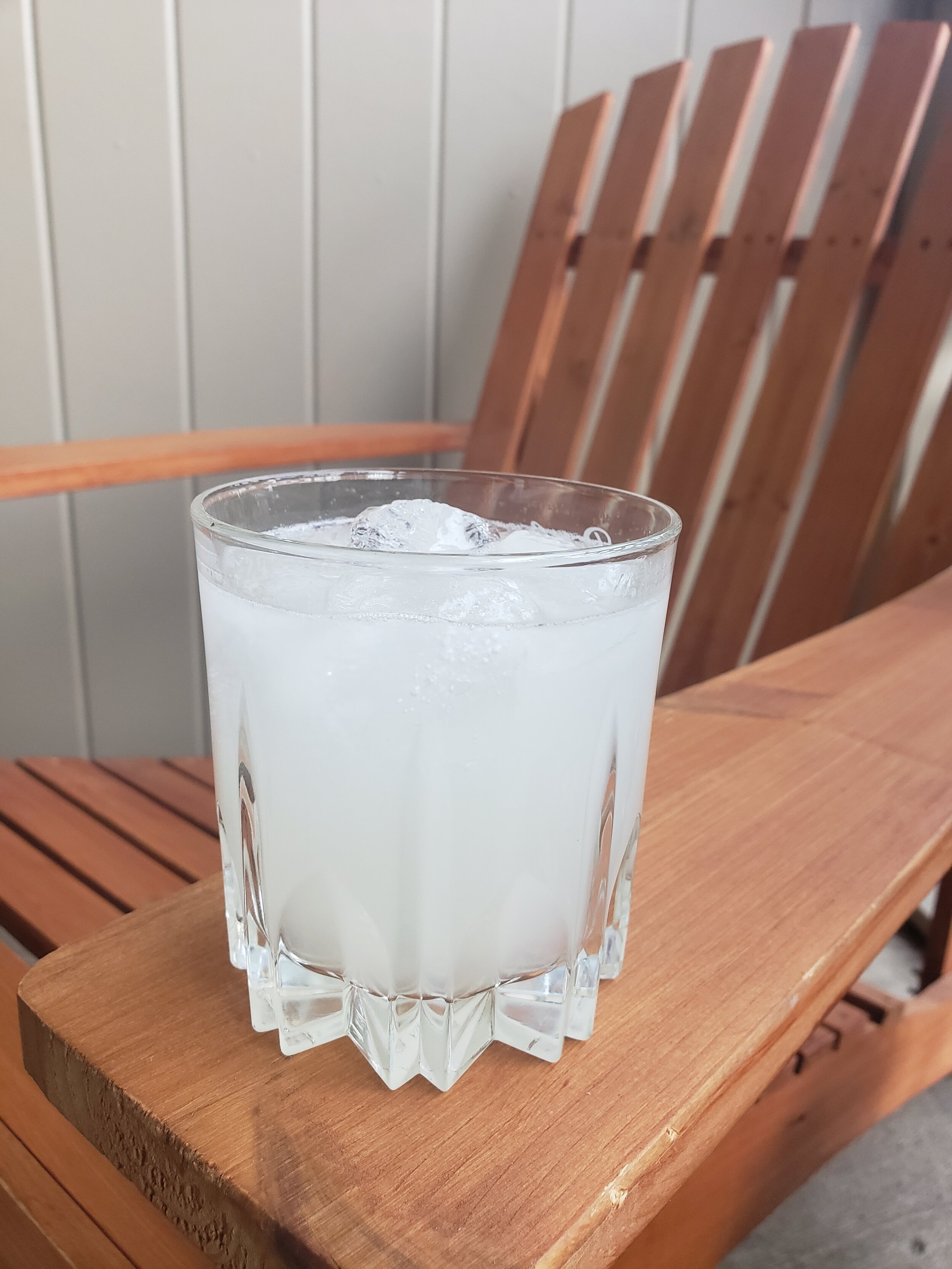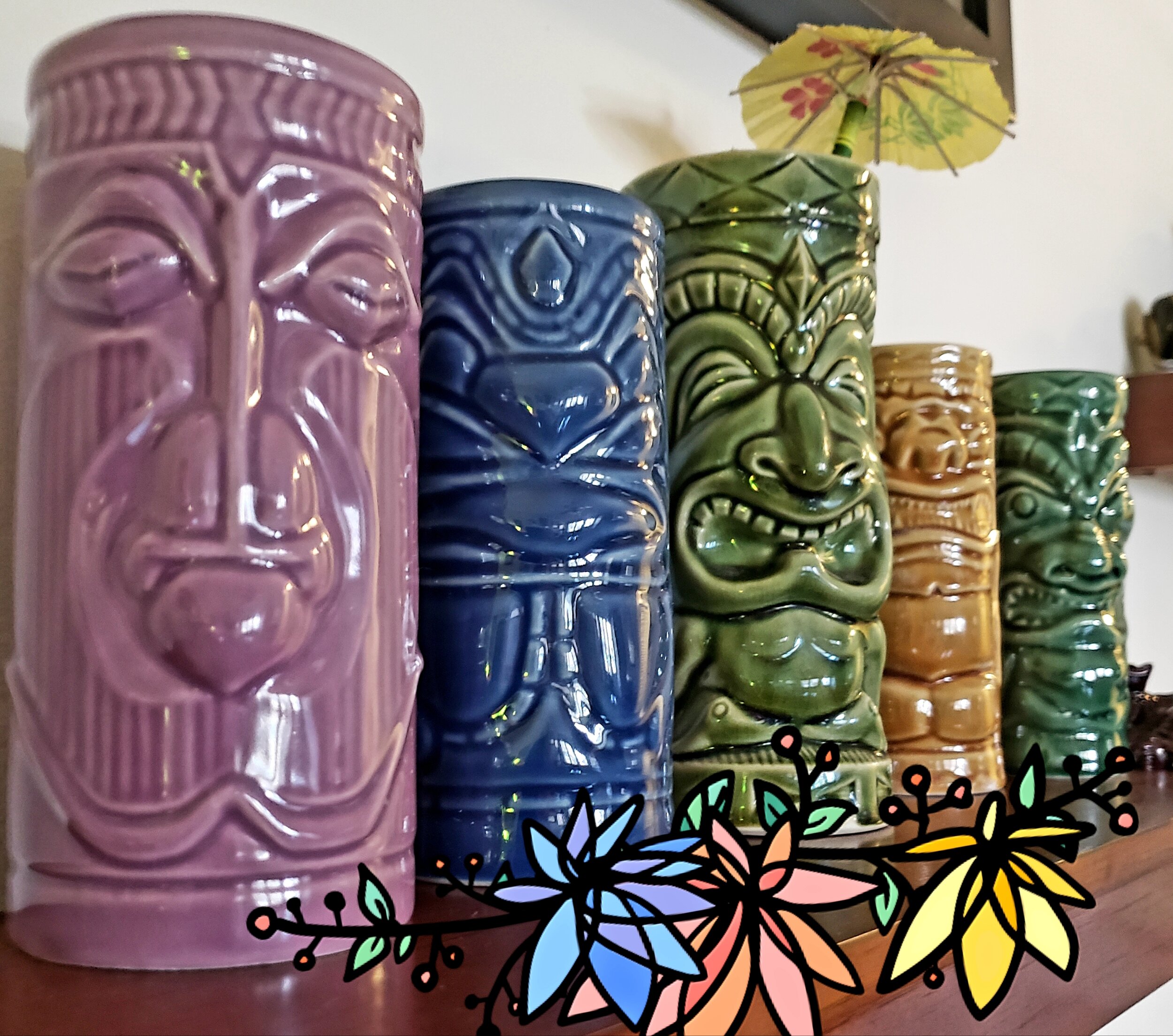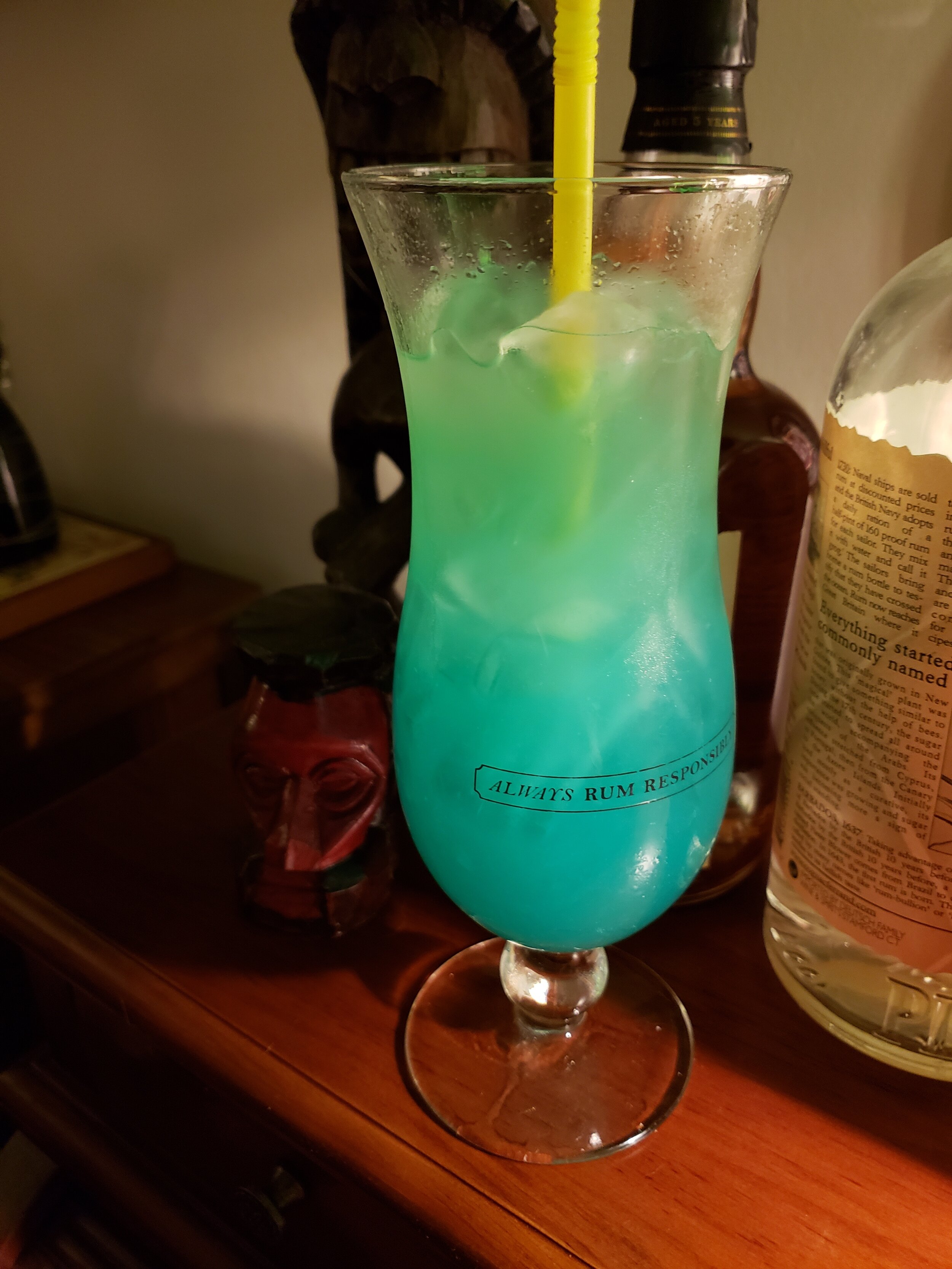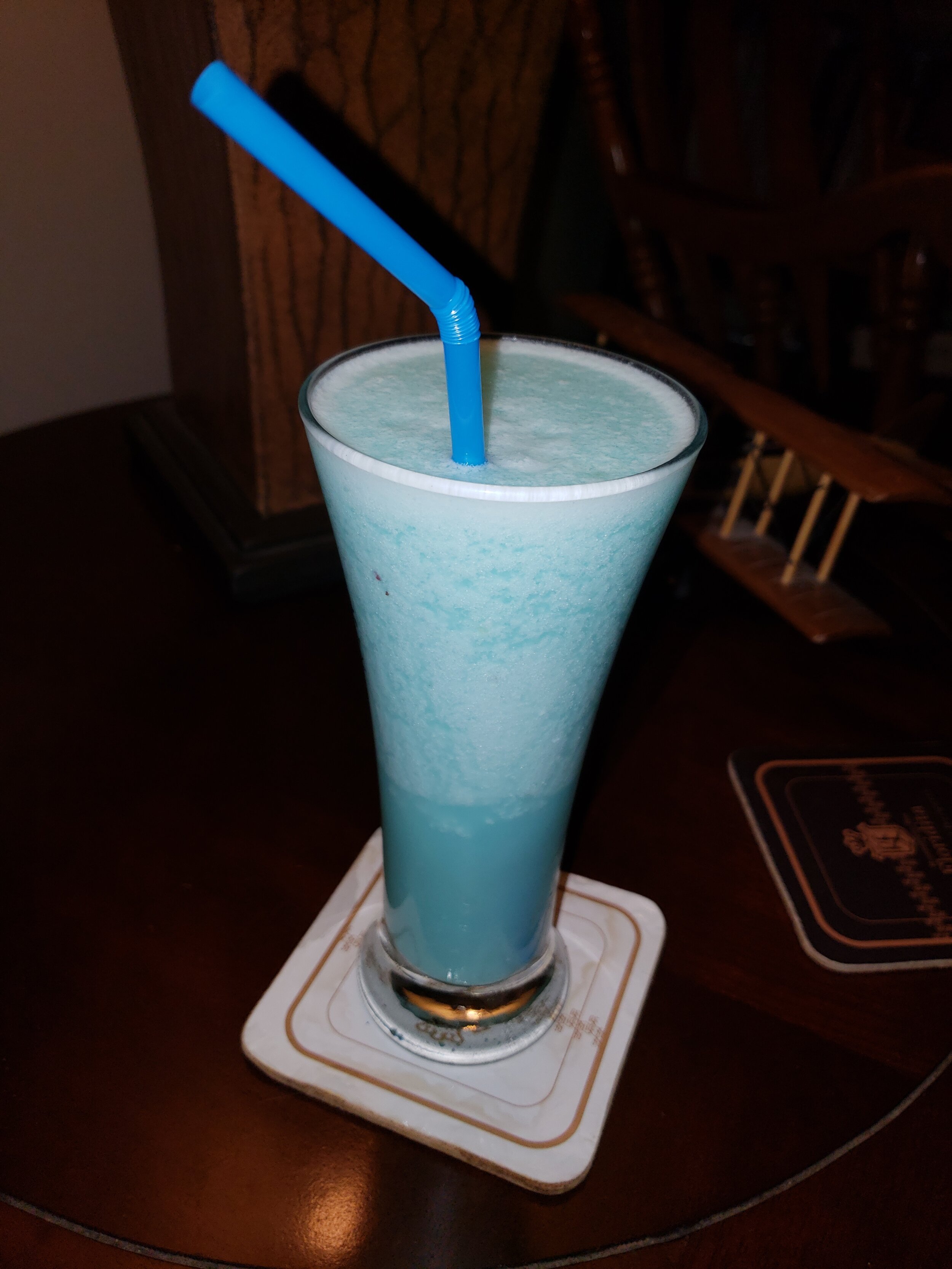We’ve all endured a bit of suffering in this two thousand twentieth year of our Lord, huh? Let’s face it, the world made us it’s bitch this year. Pestilence, civil unrest, and natural disasters have left us in a fugue state of unsure aridity. But, hey! At least we’re not zombies. I already did that episode.
When was the last time our global community suffered impacts of this magnitude? There have been wars, tragedies, epidemics, but usually depending on where they are and where you are it’s easy enough to look around and think, “well, I don’t see anything in my backyard.” And yes, most of the time in life people are cool and your neighborhood is safe and you could clear your throat at the bank without the lady in front of you clutching her pearls. Relax, Karen - I’ve got my mask and I’ve strategically arranged all my tikis around the house to ward off evil COVID spirits.
(Disclaimer: There is no empirical nor anecdotal evidence that Tikis prevent COVID-19...yet.)
But this year’s events are different in the sense that they’ve pulled us asunder rather than together. And where’s the place we all turn for some unification in the face of calamity? That’s right, bars. If you enjoy the human experience as much as me, and do not suffer social disconnection well, this year has been like a bad hangover; for which we could all use a little hair of the dog.
Many a person has sat elbow on bar head in hand hoping the sweet dionysian liquid would offer an answer, an escape, a center from which to grab reality by the horns and hold it steady just long enough to regain some sort of footing. Such was the case for patrons of the Long Bar in 1940.
Joe Scialom (Shalome) knew a bar represented the hallowed halls where diversity came to converge. He was the consummate bartender. Educated, compassionate, humble, commander of a room and the epitome of sophistication. It was his job to be there whether before or after a night of dwelling in a memory or trying to forget one, building oneself up or spiraling down. For a man to whom one could confess all their sins without saying a word night befores and morning afters were his speciality. The brave, the weak, the honorable heathens and poor unfortunate heroes; those suffering bastards. Kings and queens came to him as did the demimonde of delinquent denizens.
We’re going to learn about Joe today as well as the role he played at the helm that earned him his place among Tiki royalty.
Ladies and gentlemen, welcome to Pod Tiki, where today we leave the Caribbean and travel all the way to Egypt to meet another Don of Tiki and the cocktail that garnered him that title: The Suffering Bastard.
&&&
One of the reasons Joe Scialom holds a place in bartending history is because of his story. His origins are legion, as he told reporters whatever they needed to hear to fulfill their expectations. He played the part. Mystery and intrigue is the precept of Tiki culture. In some sense bartenders aren’t supposed to have lives, they’re supposed to listen to ours.
But Joe Scialom’s actual origins do precede what one would want from a career mixologist. Born in Egypt to an Italian Jewish immigrant and Russian Jewish exile, Joe’s father ran a pharmacy which sparked his interest in chemistry. He followed that scientific path till self-awareness caught up. After mixing drinks for friends out of boredom Joe realized he preferred mixing things that made people happy over temporarily quelling their debilitations. (Little did he know.) It wasn’t long till little Joey, much to his father’s chagrin, left the family biz and landed himself a gig at the premier watering hole in Cairo, The Long Bar at The Shepheard's Hotel.
Scialom, an erudite man who spoke several languages fluently and in dialect, rapidly rose in the ranks till he eventually took control as head bartender of the Long Bar serving the likes of Lawrence of Arabia, Winston Churchill, Charles de Gaulle, and King Farouk.
It was about this time the world plummeted into chaos. World War II. But alas, in every tragedy that tries to stamp out the flames of prosperity there is an ember to spark a silver lining. From thus came the impromptu creation that officially put Joe Scialom on the map.
British General Montgomery and his Eighth Army had taken up residency at The Shepheard's Hotel. The day would soon come where they would face off against Rommel’s branch of Nazi regime at the battle of El Alamein.
And it came to pass after a long night at the Long Bar the troops were unexpectedly roused. It was go-time. The rumors were true. The German forces had impenetrable tanks and artillery that would mow down opposing troops like blades of grass under a Briggs & Stratton. Montgomery, rarely affaced in the face of danger, scanned his infantry. These men, these men were in no shape to fight. That’s when the call came in to Joe Scialom. Four gallons of hangover cure, on the frontlines, now.
Joe hustled. Barking orders like a militant commander himself Joe gathered every mason jar, thermos, and flask he could find. Rommel’s armies had cut supply lines rendering his inventory little more than rotgut and mixers leaving his patrons complaining of bad hangovers. Thus, Joe already had this concoction in his repertoire. But how to make it work? He reached for some British Navy-issued brandy, Gin he scrounged from a trading post, some homemade sweetened lime juice, a few dashes of local bitters, and a ginger beer made by a local merchant of “dubious character”. From these ingredients he created the greatest hangover cure since tomato juice met celery salt. The Suffering Bastard.
Needless to say General Montgomery and the forces of good prevaled at the battle El Alamein winning the day for the Allied Forces and securing Joe Scialom’s place among bartending immemorial. But if you think Joe’s story ends there you are a sad suffering bastard indeed.
Much like adolescence, growth can be uncomfortable. And post war Egyptians were growing fed up with their foppish King Farouk. Disapproval of his excessive lifestyle created civil unrest in turn leading to riots which descended upon the favorite watering hole of His Majesty and others representing the beau monde elite. Which bar was that, you say? You guessed it, The Shepeard’s Hotel Long Bar.
After that, during the Suez Canal crisis, Joe was taken in on suspicion of espionage due to his relationships with high ranking officials on both sides. Following these events Joe was forced to flee Egypt with his family to his first island gig, Cyprus in the Mediteranean. Scialom’s reputation spread all over the Middle East and Europe eventually catching the attention of one Conrad Hilton. Yes, my friends. This is where our story takes us full circle back to the Pina Colada episode and finally brings our story back to the tropics.
Conrad was about to open the Caribe Hilton in San Juan, Puerto Rico and really needed that something, nay, someone. The Tiki gods seemed to have aligned for as soon as Conrad Hilton learned the famed Joe Scialom was on the market the offer went out. Joe, for his part, looked around at a region that was shredded by war, rioted his bar, arrested him and had his family exiled was like, “You know what? A tropical island sounds pretty damn good right about now.” And just like that Joe left the dessert so fast his cloud of dust created a sandstorm. (I made that part up.)
During Joe’s time at the Caribe Hilton he disseminated many drinks while proliferating his old school style bartending etiquette throughout the Caribbean and Americas. Hilton, always the enterprising, actually had the nerve to put a Trader Vic’s in the bottom floor of the Caribe while the great Joe Scialom ran the show upstairs. No matter, by this time kitschy Tiki was experiencing its first recession but Joe was still attracting thirsty tourists to the island by the literal boat-load.
In case you’re wondering Trader Vic had one poor attempt at imitating a Suffering Bastard, but it resembled the original in name alone. Vic’s version is basically, well no, it is a Mai Tai with extra rum. There’s really no need for it in our pantheon of potions. The Trader empire eventually withstood the test of time, but this impotent imposter leaves a bit of a bad taste in the mouths of Tiki historians.
The legend of Joe Scialom doesn’t end here. In fact his relationship with Hilton found him traversing the globe opening the bar programs in various hotels for his ol’ comrade Conrad. But lest this turn into the Pod Scialom show I think you bastards have suffered my regaling you all long enough. Let’s make a drink!
&&&
The Suffering Bastard, sometimes referred to as a Suffering Bar Steward depending on one’s sensibilities, gets a bad rap due to the suggestive moniker. It’s not some over powering booze bomb meant to shock you back to temporary stasis, we have Zombies for that. As a Zombie refers to what you are after the drink, a Suffering Bastard reaches down to the dry mouthed, head pounding, ashy bloodshot depths and plucks its namesake from Persephone’s prolonged punishment. Like the Bloody Mary it’s intention is medicinal, and like the Bloody Mary when done right it is a very well balanced and surprisingly tasty cocktail.
I say surprisingly because Joe breaks some of my personal rules here about using fresh ingredients. The more I travel down this path of refined libations I often slam into unintentional conclusions. One being, if Joe Scialom says use lime cordial instead of lime juice, you use the F’ing lime cordial. We’ll get there.
Let’s start where we always do - with the spirits. This cocktail calls for London Dry Gin and Cognac. For my run-down of gin check out the Aviation episode. The short story is that I prefer a botanical heavy floral gin. Nothing wrong with more laid back higher end gins for martinis or highballs, but a heavy London Dry is necessary to cut through the other flavors in this drink. Beefeater is still my go-to. As for the Cognac, for mixing I just grab a small bottle of whatever middle-grade your local shop carries. The Cognac here is for body and character. It adds a very slight fruitiness but really it simply rounds out the cocktail without taking over the way some other spirits may. I say that because at some point Bourbon began being swapped out for the Cognac. I find the Kentucky cough syrup likes to overpower the delicate balance of juniper and ginger. Stick with a cheap Cognac.
Lime cordial is basically sweetened lime juice. Not quite a syrup, but not as tart as fresh juice. The process is a bit more complicated than that, made by boiling lime juice, citric acid, lime rind and sugar water; think non-alcoholic lime curacao. A cordial is defined as liquid candy or a pleasant tasting medicine, which folds it nicely into its purpose here. So, it’s not as egregious as let’s say, sweet and sour mix.
Next we’ll need some ginger beer. Whenever I need ginger beer in a cocktail I reach for Reed’s Extra. It’s got that ginger kick without burning too hot. I know some folks swear by the Cock & Bull, which is great for Mule’s. Keep in mind mules use a neutral spirit, vodka. Here we want something to compliment not conquer. Not to mention Reed’s is a Jamaican product which fits into our Tiki vibe. (Sidenote: Jamaican Me Stormy, my take on Dark and Stormy uses Reed’s, lime juice and Myers’s Dark Rum.)
Lastly, grab some Angostura bitters.
You’ll need a shaker and a bar spoon or stirrer. Glassware for this is really up to you. Traditionally I think it’s served in a double rocks glass or highball glass, but I prefer a wincing Tiki mug. Trader vic had a special Suffering Bastard mug he served these up in and they are pretty cool if you can find one.
The recipe is as follows:
1 oz London Dry Gin
1 oz Cognac
½ oz Lime Cordial
2 Dashes Angostura Bitters
4 oz Ginger Beer
Pour everything except the ginger beer into the shaker, add ice and shake-shake-shake senora. Open it up, pour in your ginger beer and stir. Then dump the contents, ice and all into your preferred vessel.
Lift and sip. Lift and sip. A spoonful of contrition helps the medicine go down. Seriously, though. The bouquet of gin and ginger, sweetened with lime, filled out and rounded with Cognac and bitters. This is a really pleasant flavor explosion. I contend one need not even be hungover to enjoy it.
For my cigar geeks out there this is a tough one for me. Spicy ginger and thick botanicals dominate the palate here, but luckily the sweetness saves us some room for pairing. I’m going to suggest a Perdomo Reserve 10th Anniversary Sun Grown. The heavy creaminess should be able to round off the ginger.
There are a few bastard spin-offs that go beyond suffering. Scialom’s Dying Bastard is:
½ oz Gin
½ oz Cognac
½ oz Bourbon
½ Lime Cordial
2 Dashes Angostura
4 oz Ginger Beer
...and the Dead Bastard:
½ oz Gin
½ oz Cognac
½ oz Bourbon
½ oz White Rum
½ oz Lime Cordial
2 Dashes Angostura
4 oz Ginger Beer and a Bastard in a pear tree.
I don’t really think there’s ever a reason to make these variations. Unless of course you’re trying to earn your Bastard’s degree. (Get it! Nevermind.)
As a remedy this drink hits all the savory spicy notes of a Bloody Mary but adds that bright refreshing bite of floralness with the juniper. Honestly, this drink surprised me in how good it is. Then again, a chemist-genius-bartending Tiki god did create it. The Suffering Bastard exemplifies what I look for in a great cocktail: balance and nuance.
Balance and nuance, huh? Seems like that could be applied to a lot of the issues we face on this crazy spinning rock we call home.
This episode is the reason I do this. The unexpected storied journey of people and relationships and origins of this Tiki thing that permeates cocktail culture and our own in so many ways.
Equality is not pretending we’re all the same, it’s acknowledging the beauty in our differences. And remember, just because you can’t always see people suffering outside your own window doesn’t mean they are not sick, or scared, or hurting.
As we move into the next phase of our lives it feels like we all need to get over the hangover of last year. Let’s do it with love and respect and safety.
Because hey, some great things have also happened. For example the lovely Faith and I are finally married! No more will you hear me speak of my fiance but instead now my Wife.
Her cocktail of compassion, integrity, strength, patience, and love in itself proves to me that we can all come back from being - a Suffering Bastard.
